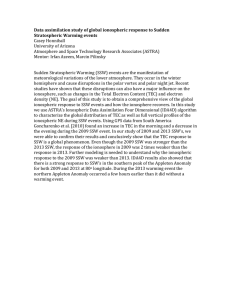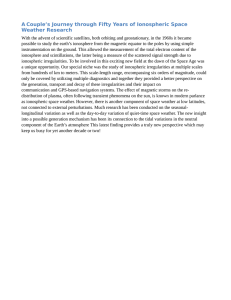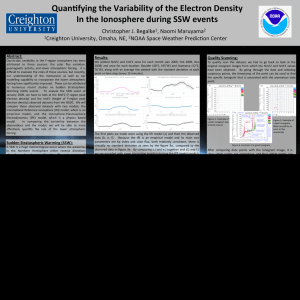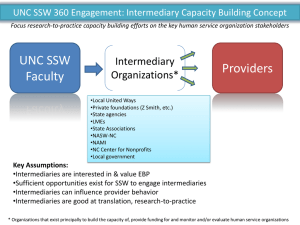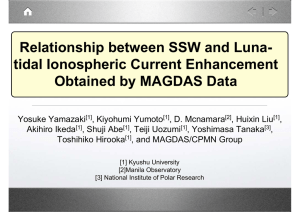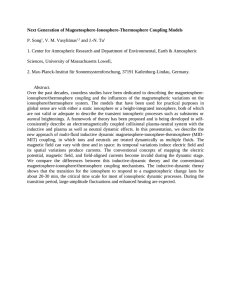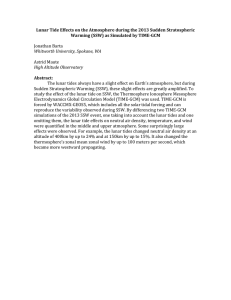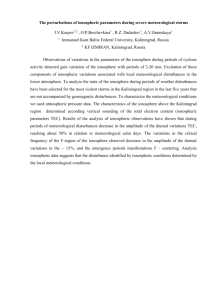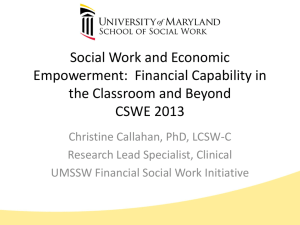Document 12625115
advertisement
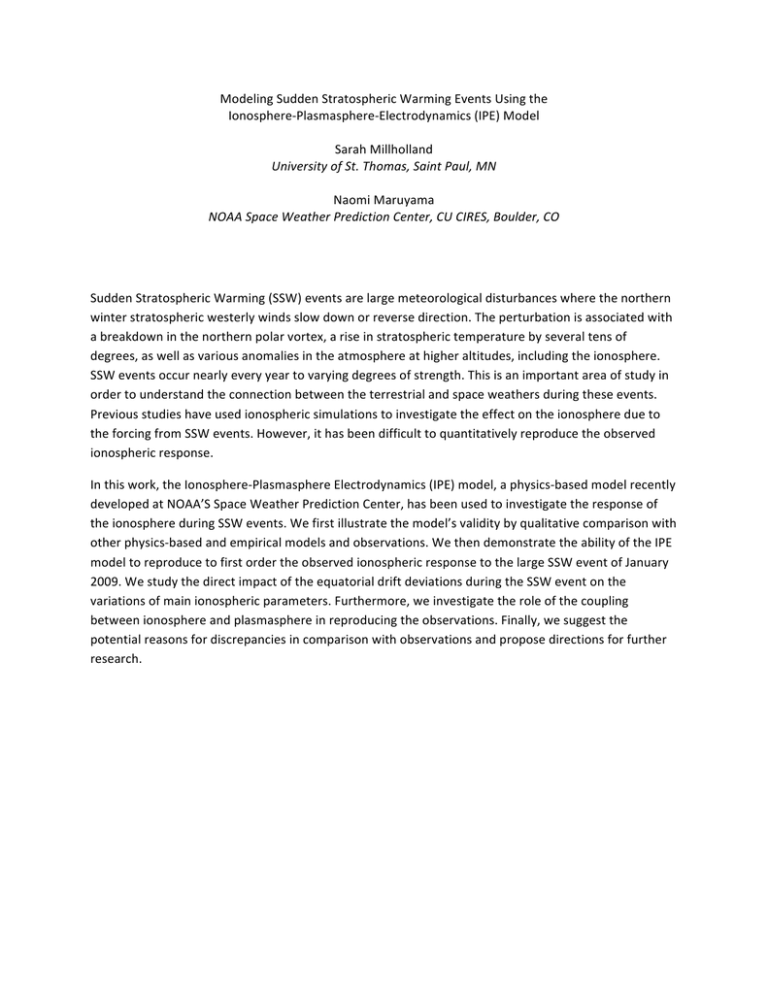
Modeling Sudden Stratospheric Warming Events Using the Ionosphere-­‐Plasmasphere-­‐Electrodynamics (IPE) Model Sarah Millholland University of St. Thomas, Saint Paul, MN Naomi Maruyama NOAA Space Weather Prediction Center, CU CIRES, Boulder, CO Sudden Stratospheric Warming (SSW) events are large meteorological disturbances where the northern winter stratospheric westerly winds slow down or reverse direction. The perturbation is associated with a breakdown in the northern polar vortex, a rise in stratospheric temperature by several tens of degrees, as well as various anomalies in the atmosphere at higher altitudes, including the ionosphere. SSW events occur nearly every year to varying degrees of strength. This is an important area of study in order to understand the connection between the terrestrial and space weathers during these events. Previous studies have used ionospheric simulations to investigate the effect on the ionosphere due to the forcing from SSW events. However, it has been difficult to quantitatively reproduce the observed ionospheric response. In this work, the Ionosphere-­‐Plasmasphere Electrodynamics (IPE) model, a physics-­‐based model recently developed at NOAA’S Space Weather Prediction Center, has been used to investigate the response of the ionosphere during SSW events. We first illustrate the model’s validity by qualitative comparison with other physics-­‐based and empirical models and observations. We then demonstrate the ability of the IPE model to reproduce to first order the observed ionospheric response to the large SSW event of January 2009. We study the direct impact of the equatorial drift deviations during the SSW event on the variations of main ionospheric parameters. Furthermore, we investigate the role of the coupling between ionosphere and plasmasphere in reproducing the observations. Finally, we suggest the potential reasons for discrepancies in comparison with observations and propose directions for further research.
